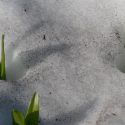UW contributes to international fusion program
University of Wisconsin–Madison Fusion Technology Institute (FTI) researchers are playing a key role in the International Thermonuclear Experimental Reactor (ITER), a multinational project designed to demonstrate the scientific and technological feasibility of fusion power.
Construction on the massive research facility will begin in 2007 in Cadarache, France, and will take nearly a decade to build.
Each participating entity – the United States, China, the European Union, India, Japan, the Republic of Korea and the Russian Federation – will design, analyze and build certain components of ITER. “There are still a lot of design issues that need to be tackled,” says UW–Madison engineering physics research Professor Mohamed Sawan.
Sawan is leading the FTI team, which includes engineering physicist Paul Wilson, adjunct professor and Argonne National Laboratory scientist Tim Tautges, and researcher Greg Sviatoslavsky.
FTI researchers are leading the U.S. portion of the ITER neutronics analysis. In a reactor such as ITER, the fusion reaction that occurs in the plasma produces neutrons with much higher energy than those produced in fission reactions. “High-energy neutrons can produce more damage to structural materials, to sensitive components,” says Sawan. “Nuclear analysis essentially is looking at what these neutrons will do to the components of the reactor.”
In addition, it helps designers provide adequate shielding and assess what might happen when streaming-neutrons flying out of tiny holes in the shield-occurs. Knowing what level to expect, says Sawan, is important both in licensing and for maintenance access.
The UW–Madison research team will be responsible for managing a number of specific challenges, including the development of precise measures of neutron behavior in the reactor and methods to improve the reactor’s energy self-sufficiency.
Working with ITER designers, FTI researchers also are modeling the reactor’s diagnostic ports to assess whether components such as cables, fiber optics, transducers and detectors can withstand radiation damage. “These are all very sensitive components, but particularly when we operate in the severe nuclear environment,” says Sawan.
Likewise, the “first wall,” or the wall that faces the plasma, receives very high doses of radiation from neutrons and large surface heat flux from radiation emanating from the plasma. FTI researchers are collaborating with colleagues at Sandia Laboratory to ensure the three U.S. first-wall shield modules have adequate cooling and can handle the experiment’s highest heat flux and radiation levels. “These should survive for the life of the machine and should be designed carefully,” says Sawan.
Directed by Grainger Professor of Engineering Physics Gerald Kulcinski, the FTI received approximately $700,000 in 2006 from the Department of Energy to support these initiatives.
Tags: business, international, research



